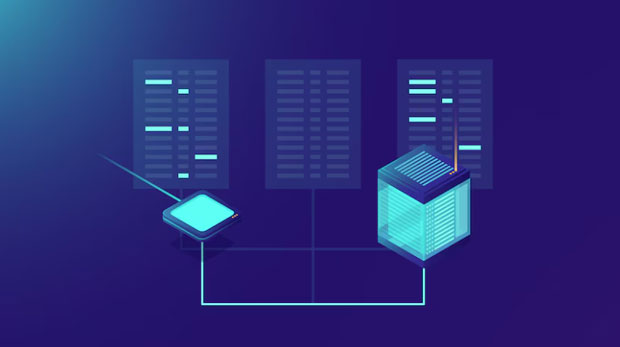In today's internet-driven world, proxies have become indispensable tools for online privacy, security, and content access. When it comes to proxy servers, there are two main types: free proxy servers and paid proxies. Both serve similar functions, but their quality, security, and features differ greatly. Understanding these differences can help users make an informed decision depending on their needs and priorities. This article will dive deep into the distinctions between free proxy servers and paid proxies, highlighting their pros, cons, and suitability for different online tasks. 1. Cost: Free vs. Paid Proxy ServersThe most obvious difference between free and paid proxy servers is cost. Free proxies, as the name suggests, do not require any payment. They are often provided by individuals, third-party services, or companies as a way to attract users or promote other services. On the other hand, paid proxies come with a subscription or one-time payment requirement, offering users premium access to better services.While free proxies can be tempting because they don’t come with a price tag, they come with limitations and potential drawbacks. Paid proxies, however, generally offer better performance, reliability, and security, making them a more dependable choice for individuals and businesses with critical needs.2. Performance and SpeedThe performance of a proxy server directly impacts the user’s online experience. Free proxies often suffer from slow speeds and unreliable connections due to high user demand. Because many users share the same proxy server, bandwidth is limited, leading to congestion. This congestion can cause delays, timeouts, and poor browsing or streaming experiences.Paid proxies, in contrast, tend to offer faster speeds and more stable connections. Since fewer people use a paid proxy service, there is less congestion, leading to better performance. Additionally, paid services often provide dedicated servers or private IPs, which further improves speed and performance, making them ideal for tasks such as video streaming, online gaming, or web scraping.3. Security and PrivacySecurity and privacy are perhaps the most crucial factors to consider when choosing a proxy. Free proxies are notorious for their lack of encryption, leaving users vulnerable to cyberattacks, malware, and data theft. Some free proxies even log user activities and sell this data to third parties for profit, compromising user privacy.Paid proxies, however, offer superior security features, such as encryption, anonymity, and better data protection protocols. Reputable paid proxy providers ensure that no user data is logged or sold, and they typically offer enhanced privacy features, making them a safer choice for users who need to protect sensitive information.4. Reliability and UptimeReliability is another major concern when it comes to proxies. Free proxies tend to have unpredictable uptime. Since they are not always maintained by a professional team, they can experience frequent downtime, leading to frustration and disruption. Additionally, free proxies may be blocked or blacklisted by certain websites or services, which could prevent users from accessing specific content.Paid proxies, in contrast, are generally more reliable. Paid proxy providers invest in high-quality infrastructure and ensure their servers are constantly monitored and maintained. They also offer guarantees regarding uptime, which means users can rely on the service without worrying about disruptions. Many paid services also provide multiple server locations, giving users greater flexibility and access to content from around the world.5. Customer SupportCustomer support is an area where paid proxy servers excel. Paid providers typically offer 24/7 customer support, allowing users to get help quickly if they encounter any issues with their proxy server. Whether it’s a technical issue or a billing problem, paid proxy services prioritize customer satisfaction and ensure that their users have access to professional support.In contrast, free proxies offer little to no customer support. If you run into a problem with a free proxy, you may be left to troubleshoot on your own or seek help from online forums. Since free proxies are usually offered by non-commercial entities, customer service is not a priority.6. Features and CustomizationPaid proxies offer a wide range of features and customization options that free proxies lack. For example, paid proxies often come with a variety of server locations, which is useful for accessing geo-restricted content. Users can choose proxies from specific countries to bypass regional restrictions and access websites or services available only in certain regions.Moreover, paid proxies allow for more advanced features such as IP rotation, session control, and enhanced anonymity settings. These features are particularly useful for businesses or individuals involved in large-scale web scraping, data collection, or SEO testing. Free proxies, on the other hand, typically offer only basic features with minimal customization options.7. Risk of Malware and AdsFree proxies often come with hidden risks, one of which is exposure to malware or unwanted ads. Many free proxy services are not properly secured and can serve as a gateway for malicious software to infiltrate your system. These proxies may also inject ads into your browsing sessions, leading to a disruptive and frustrating user experience.Paid proxies, however, offer a safer browsing environment. Premium providers use secure, high-quality servers that are regularly updated to avoid malware. They also avoid injecting ads into their services, ensuring that users have an ad-free, secure experience while using their proxies.8. Use Cases: Which One to Choose?Ultimately, the decision between a free and a paid proxy depends on your needs. Free proxies may suffice for casual browsing or testing purposes, where high-speed connections, security, and reliability are not critical. They can also be useful for occasional tasks like bypassing geo-restrictions for streaming content or accessing websites in a different region.However, if you require a reliable, secure, and fast connection for professional or sensitive tasks—such as online business operations, web scraping, or protecting personal data—a paid proxy is the better choice. Paid proxies offer better performance, enhanced security, and a host of additional features that make them suitable for businesses, marketers, or anyone requiring higher levels of privacy and reliability online.In conclusion, the choice between free and paid proxy servers depends on the level of service and security you need. While free proxies may be tempting due to their zero cost, they come with numerous limitations, including slower speeds, higher risks, and less reliable uptime. Paid proxies, on the other hand, provide enhanced performance, security, and customer support, making them the better option for users who require a stable and safe online experience. As online security and privacy concerns continue to grow, investing in a paid proxy service may be a worthwhile decision for those looking to protect their data and enjoy smoother internet experiences.
Oct 15, 2025



































































